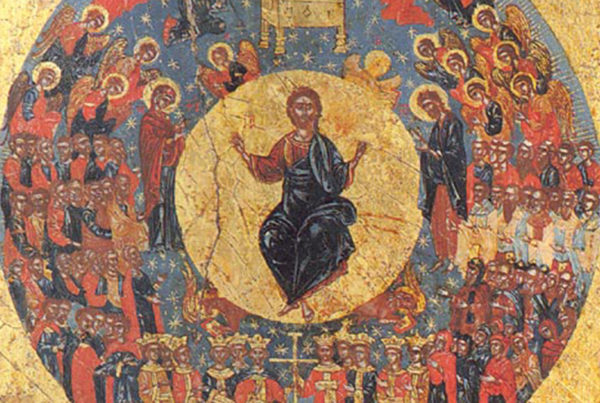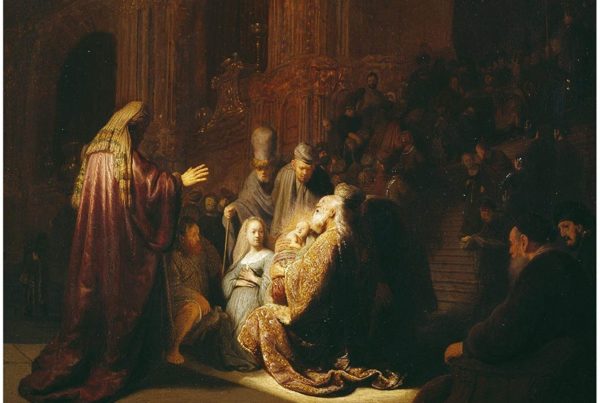Pastor, scholar, and longtime evangelical provocateur Greg Boyd is out to correct what he calls a “lacuna” in the field of biblical interpretation, and that is this: how can we at once affirm the God-breathed and revelatory nature of the Old Testament text while also affirming that the God revealed in the cross of Jesus Christ is the revelation that supersedes all others, especially when the pictures of God portrayed in each appear to be at odds?
The result is what I consider to be one of the most substantive and important works in the field of biblical hermeneutics that we have ever seen. Boyd’s recently released Crucifixion of the Warrior God (Fortress Press–“CWG” from here out) is a meticulously researched, carefully and exhaustively argued, 1,200+ page (1,400+ if you include his appendices, bibliography, and extensive footnotes) tour de force that deserves to be reckoned with by pastors, scholars, and theologians for years to come. It’s that important.
Regular readers of this blog know that I don’t often go out on a limb with claims like that, but this is one I’m willing to stand by. In my 15 or so years in ministry, one of the things I have become convinced of is that the gruesome depictions of God we often run into in the Old Testament text represent some of the most significant obstacles to faith that many people face–believer and skeptic alike. There is, on the one hand, Jesus, in his mercy and enemy-loving, other-embracing kindness; and on the other hand, the God of the Old Testament, who is often portrayed in the text of Scripture in ways that seem to contradict the beauty of Jesus. It is hard for many to see the compatibility between the two, and given the violent world we find ourselves increasingly living in, many simply throw their hands up in the air and give up the quest altogether in favor of a much broader, blander, “humanitarian” faith in which the Bible, and especially the Old Testament, plays little to no part at all.
For Boyd, this situation is simply unacceptable. He explains:
Because Jesus affirmed the inspiration of the OT, I cannot agree with the many today who argue that we must simply reject such violent portraits of God, even though I cannot disagree with their claim that some of these portraits ‘strike us as sinister and evil.’ Yet because I believe that Jesus reveals an agape-centered, other-oriented, enemy-embracing God who opposes all violence, and because I have become convinced that the New Testament presents Jesus as the revelation that surpasses all others, I also can no longer agree with many of my fellow Evangelicals who insist that we must simply embrace these violent divine portraits as completely accurate revelations of God alongside the revelation we are given in Christ. (xxix, emphasis mine)
That last sentence, for Boyd, is crucial, and it drives the work. Too much evangelical theology, in his opinion, has treated the violent portraits of God in the Old Testament as equal to the revelation of God given to us in the cross of Jesus Christ. Boyd’s argument is that treating those texts as such diminishes the peculiar glory of the cross, insisting as it does by implication that the love of God revealed in the crucified Jesus is in need of counterbalancing portraits. “Yes, God is love, but we must also remember that God is__________…” or something like that is how it usually goes.
The challenge therefore, argues Boyd, is not one of simply “reconciling” the portraits of God we see in the Old Testament with that which is disclosed to us in the suffering Messiah, but instead
…is about how we can disclose how these portraits, together with all Scripture, actually point to Jesus, whose identity, life, and ministry are centered on the revelation of the self-sacrificial, agape-love of God most fully disclosed on the cross (xxxii, emphasis mine).
And that, right there, is the “lacuna”, the “missing portion” in the history of biblical hermeneutics that Boyd hopes to provide in CWG, giving us a thorough “cross-based hermeneutics” and then attempting to apply it to some of the more grisly portions of the Old Testament.
I should say, perhaps as something of a disclaimer, that while I enjoyed this book immensely, I did not agree with all of it. But, then again, I don’t agree with all of anything I read. And neither should you. Perfect agreement is not the standard of faithfulness for the people of God. Faithfulness, rather, requires that we carefully and thoughtfully wrestle, personally and corporately, with the text of Scripture in the hopes that in so doing, more light will be shed on our path, and our witness to the world will be clearer and more compelling.
Which is why I’m going to post short summaries of Boyd’s proposal. To help us wrestle a bit. And maybe to whet your appetite to actually read it. It’s tough but rewarding.
Here’s how the posts will go:
- Post 1 – Introduction (which you just finished reading)
- Post 2 – Two Foundational Questions
From there, I’ll work through the four big ideas of his hermeneutical proposal, in order:
- Post 3 – The Principle of Cruciform Accommodation
- Post 4 – The Principle of Redemptive Withdrawal
- Post 5 – The Principle of Cosmic Conflict
- Post 6 – The Principle of Semiautonomous power
And then likely finish up with Post 7 – (My own) Concluding Thoughts and Questions.
Hopefully we’ll all learn a bunch.
Grace and peace,
Andrew



